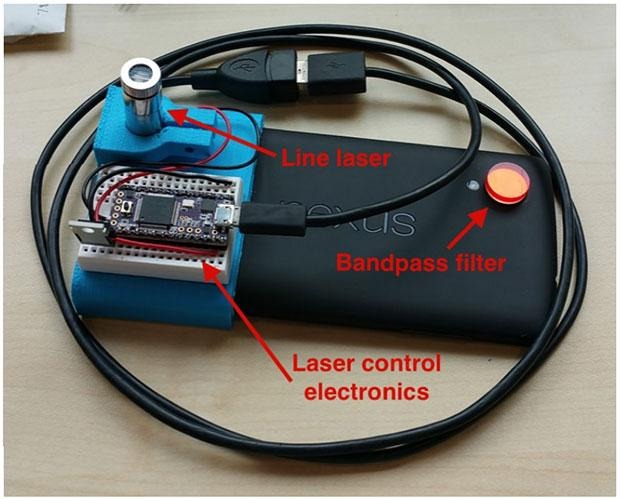MIT Researchers Turn A Phone Into A Cheap Laser Scanner
These days, almost every smart device has one or more sensors in addition to being connected to the Internet or to smartphones. Those sensors range from humble proximity sensors to more sophisticated, and more expensive, radars and "lidars". Mobile robots and self-driving contraptions are perhaps the biggest beneficiaries of such sensors, but those sensors do come cheaply. Well, they could, depending on how much you are willing to compromise. Researchers at MIT developed a laser distance sensor that, while crude, is quite decent for its price, which is only $49 plus a smartphone sacrificed to the cause.
$49 is the price of the off the shelf components that the researchers used to setup the system, which, in a nutshell is composed of a laser control electronics, a line laser emitter, and a bandpass filter to attach to the smartphone camera lens. Yes, you will need a smartphone, so your actual expenses might vary. For their prototype, they used one of the most loved, by hackers and modders that is, Android smartphone of all time: a Nexus 5.

The system used basic triangulation algorithms to determine the distance between an object and the smartphone. To put it simplistically, the line laser shines a beam of light at an object, which, in turn, reflects the light at a certain angle. The Nexus 5 camera identifies that reflected beam and, based on the angle, is able to compute the distance of the object. Sounds too good and too simple to be true? In a way, it is, but therein also lies its appeal.
The "Smartphone LDS", as the researchers call it, is definitely not going to compete with more professional sensors. In some cases, it might not even be able to compete with something like a repurposed Kinect. The advantage of the Smartphone LDS, however, aside from its insanely cheap price, is that it works decently outdoors as it does indoors. The Kinect and similar sensors start panicking when strong ambient outdoor light is involved. The MIT version is able to go around this problem by utilizing the smartphone camera for two purposes. One is, of course, to detect the reflected laser light. The other is to continually take photos of the surrounding, which a specialized software then uses to compare with frames containing the laser signal. In effect, it's like spot the difference, with the difference being the presence of the laser light versus ambient light.
The research speculate that the Smartphone LDS is good enough for robots and vehicles traveling at a max of 18.5 km/h, which might not be all that. But, like earlier mentioned, compromises. The field of view is also restricted to 48 degrees but is, at least, accurate up to 2 meters outdoors or 6 meters indoors. But best of all, the system is actually scalable. The better the camera sensor is and the more powerful the smartphone processors are, the better the results can be. Not that bad for a $49 DIY add-on to an unused smartphone.
SOURCE: IEEE Spectrum
